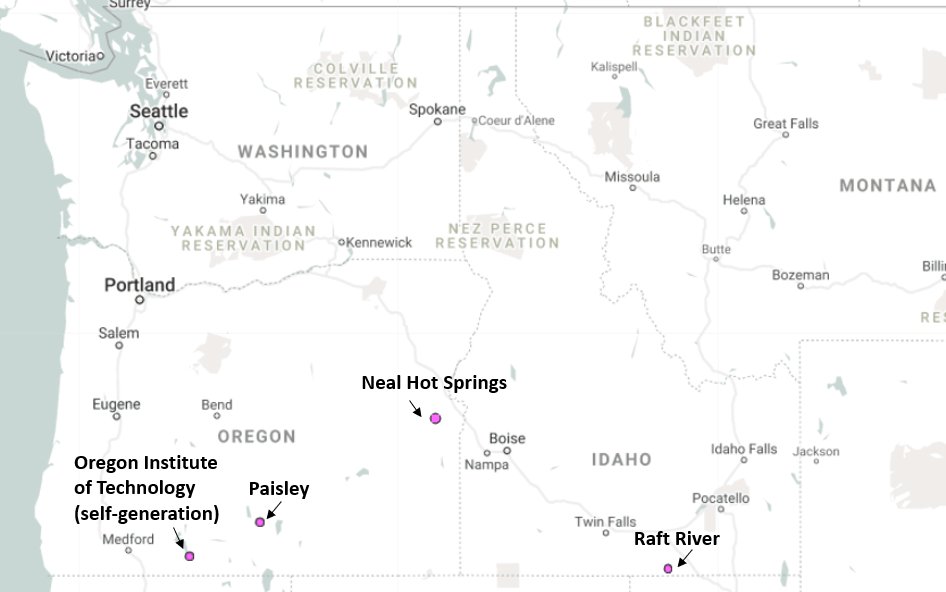Geothermal
Geothermal is a renewable, clean energy resource with zero or low carbon emissions – depending on the technology used (flash steam technology emits minimal excess steam; dry steam and binary emit zero emissions). The Pacific Northwest is home to a significant, naturally occurring geothermal resource (heat + water + permeability) – especially in Southern Oregon and Idaho – and yet, development has been limited so far. Between 2007 and 2015, four geothermal projects were developed in the region, totaling about 50 megawatts installed nameplate capacity. Each project utilizes binary, closed-loop technology – the hot water and steam from the production well is used to boil a working fluid that is contained in a separate, closed-loop process, which is then vaporized to steam to rotate the turbine.
Conventional Geothermal in the PNW

There have been several efforts to explore development of enhanced geothermal systems (EGS) (otherwise known as “engineered” geothermal systems) in the Pacific Northwest, but no resources have been developed to-date. While conventional geothermal requires the natural occurrence of heat, water, and permeability, EGS only requires hot rock. The permeability of the rock and the fluid are engineered, which means that the potential for EGS as a resource is even greater than conventional geothermal. However, there is significant risk involved with any geothermal development and without upfront capital to invest, the cost of exploration and initial testing is often prohibitive to development. See EGS in Emerging Technologies to learn more.


